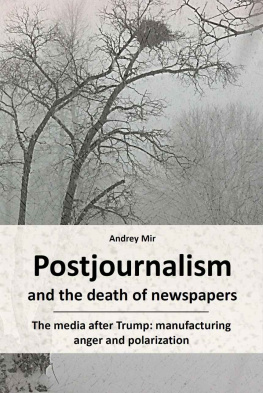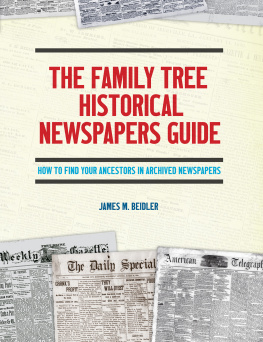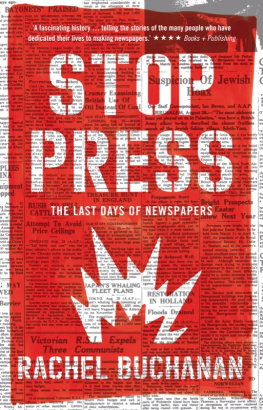Toronto, Canada.
Introduction: The Great Pivot from advertising to reader revenue
Fake news is an overhyped issue. The greatest harm caused by media is polarization, and the biggest issue is that polarization has become systemically embedded into both social media and the mass media. Polarization is not merely a side effect but a condition of their business success.
The recent surge in polarization originated from the advent of social media, which unleashed the authorship of the masses. In this newly emerged horizontal communications, alternative agendas were gradually shaped. It soon became apparent that this direct representation of opinions forms very different agendas than those shaped by the more traditional representative form of opinion-making, the news media.
The clash between the alternative agendas of social media and the mainstream agendas of the news media entailed political polarization, which produced two waves of anti-establishment movements.
The first wave was caused by the initial proliferation of social media in the early 2010s, when digitized educated progressive urban youth ignited the Arab Spring, the Occupy movement in the US, the protests of indignados in Europe and worldwide protests against the old institutional establishment.
The second wave of polarization started in the mid-2010s, when social media had permeated society deeply enough to reach and influence those who are older, less educated, less urban, and less progressive. As a result, the rise of conservative, right-wing and fundamentalist movements affected elections and social life around the world. In a sense, Trumpism continued the Occupy Wall Street movement but on a completely different demographic basis.
The grassroots activity of the digitized masses, having been enabled by social media, not only fueled alternative agendas but also returned the favor to social media by providing higher user engagement. User engagement is the fundamental factor of social media's business. Thus, through the strive for user engagement, the business of social media happened to be tied to political polarization. There is nobodys evil intent or conspiracy behind such settings; the hardware of this media environment just requires this software polarization.
***
In parallel, a seismic shift occurred in old media. The hardware of the news media business has drastically changed, too. Over the last 1015 years, both advertisers and audiences have fled to better platforms, where content is free and far more attractive and ad delivery is cheaper and far more efficient. The classical business models of the news media, news retail and ad sales, have been shaken up so violently that it is hard now for the media to survive.
Ad revenue in the media has declined much faster than reader revenue. The media were therefore forced to switch to the reader revenue business model aimed to sell content. However, as content is free on the internet, it is hard to sell. People almost always already know the news before they come to news websites because they invariably start their daily media routine with newsfeeds on social media. Increasingly, therefore, if and when people turn to the news media, it is not to find news, but rather to validate already known news.
Thus, the reader revenue the news media now seek is not a payment for news; it is actually more a validation fee. The audience still agrees to pay for the validation of news within the accepted and sanctioned value system. After switching from ad revenue to reader revenue, the business of the media has mutated from news supply to news validation.
***
The mass media business is desperately searching for appropriate pitches and formats for this last-resort business model amid the shrinking revenues. New forms of funding are tested, among which the most promising appears to be philanthropy funding and the membership model. Philanthropy funding, most often accumulated via foundations, assumes that the media outlet picks up a pressing social issue and pledges to cover it for a grant or continued funding from a foundation. This form of funding inevitably leads journalists to excessively focus on chosen triggering topics instead of covering a wider spectrum. Under this form of funding, the media surrender a part of their newsroom autonomy to foundations, which have their own understanding of what is important for society.
The membership model has married the motives of philanthropy funding with traditional subscription. Within the membership model, a media outlet defines a noble cause and offers the audience the opportunity to join the cause and support journalists through donations. However, such noble causes always happen to be, in fact, the most potentially donatable causes. Eventually, the membership model has come to calling readers to pay not for news but for the public service of the media outlet, which has pledged to cover certain social issues or just cover news from a certain angle or within a certain value system.
The radical difference between traditional news retail and the membership model is that the payer is not a reader. The membership payers do not pay to get news for themselves (they already know the news), they pay for news to be delivered to others. The membership model leads the media to set a certain agenda and promote certain values, pitching for money from the most active part of the former audience now the donating audience.
The validation fee and the membership model are similar in their impact on journalism. They require newsrooms to operate with values, not news. This slowly forces journalism to mutate into crowdfunded propaganda postjournalism.
***
The desperate attempts of the media to replace the faded business models with a hybrid form of reader revenue coincides with political polarization spurred by social media.
During the time when the membership model was tested and its relative viability proved (the Guardian , De Correspondent and others between 20132016), social media empowered alternative agendas and boosted polarization insomuch as it caused the political shocks of Trump and Brexit. The philosophy behind reader revenue in the form of membership appeared to be in tune with the rise of politicization. The leading mainstream media, previously sticking to paywalls, started to promote the noble cause of democracy as a cause of journalism, to which the audience was invited to join.
The media has started pitching subscription as membership. The transactional offer of selling news has turned into philanthropy soliciting. The news media have started soliciting subscription as donation.
With this shift, subscribers gradually turn into two new categories of payers:
1) those who pay a validation fee for the news validation service of the media, and
2) the donating audience contracting the media to influence others.
Both types pay the news media not for news but rather for impact. They incentivize the news media to sell impact.
***
Thus, a completely new business model has been formed in the media, herein called the donscription model, when the subscription actually represents some hybrid of a validation fee and donation. This sort of reader revenue is not based on retailing news; it is based on validating the value of news and promoting agendas.
Because the largest mainstream media outlets in the US, both liberal and conservative, performed incredibly well in commodifying Trump in the form of subscriptions solicited as donations to the cause, the rest of the media market has started moving in the same direction. The media are increasingly pitching their services as a noble cause in the hopes of attracting audience support in the form of donations or time spent.









